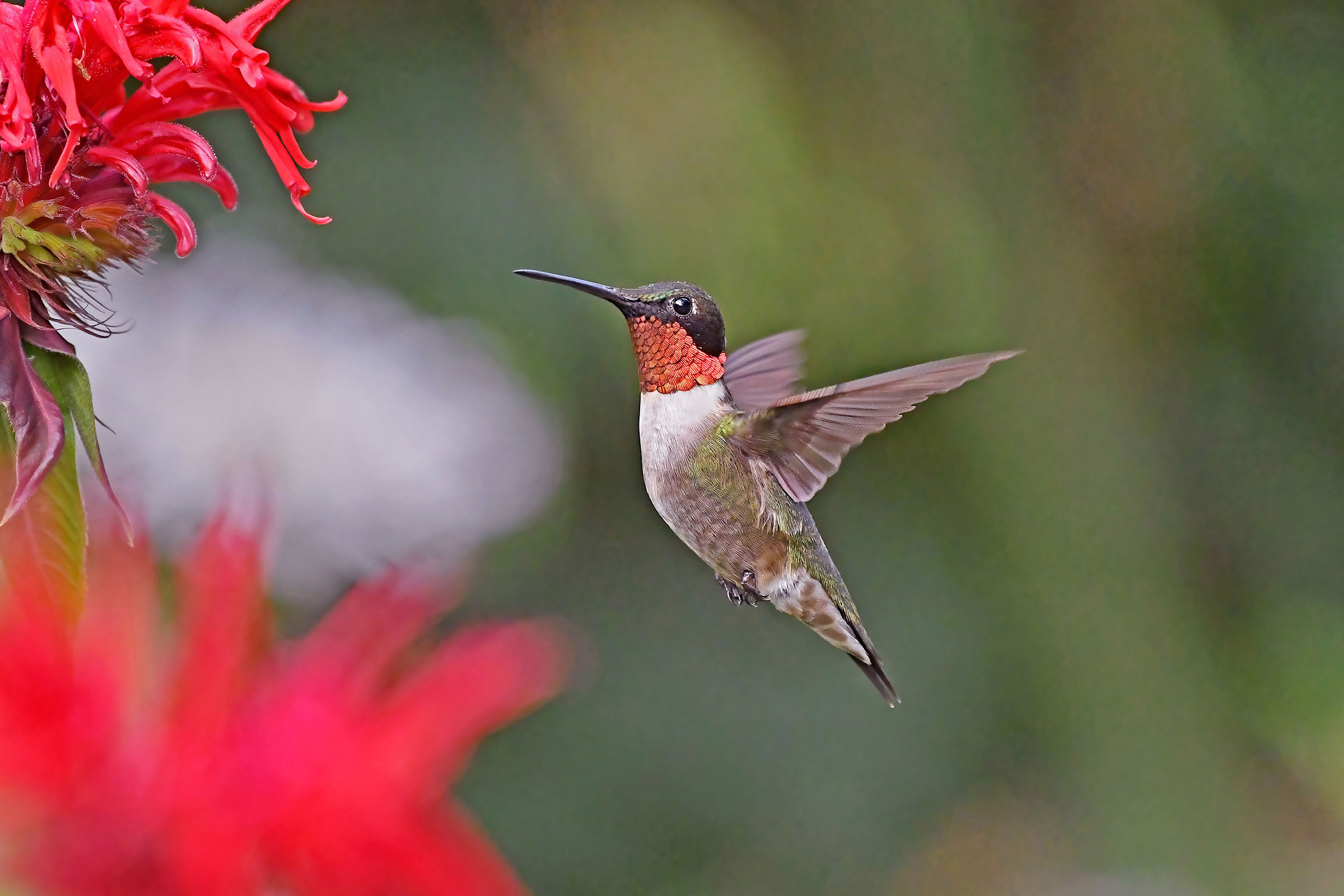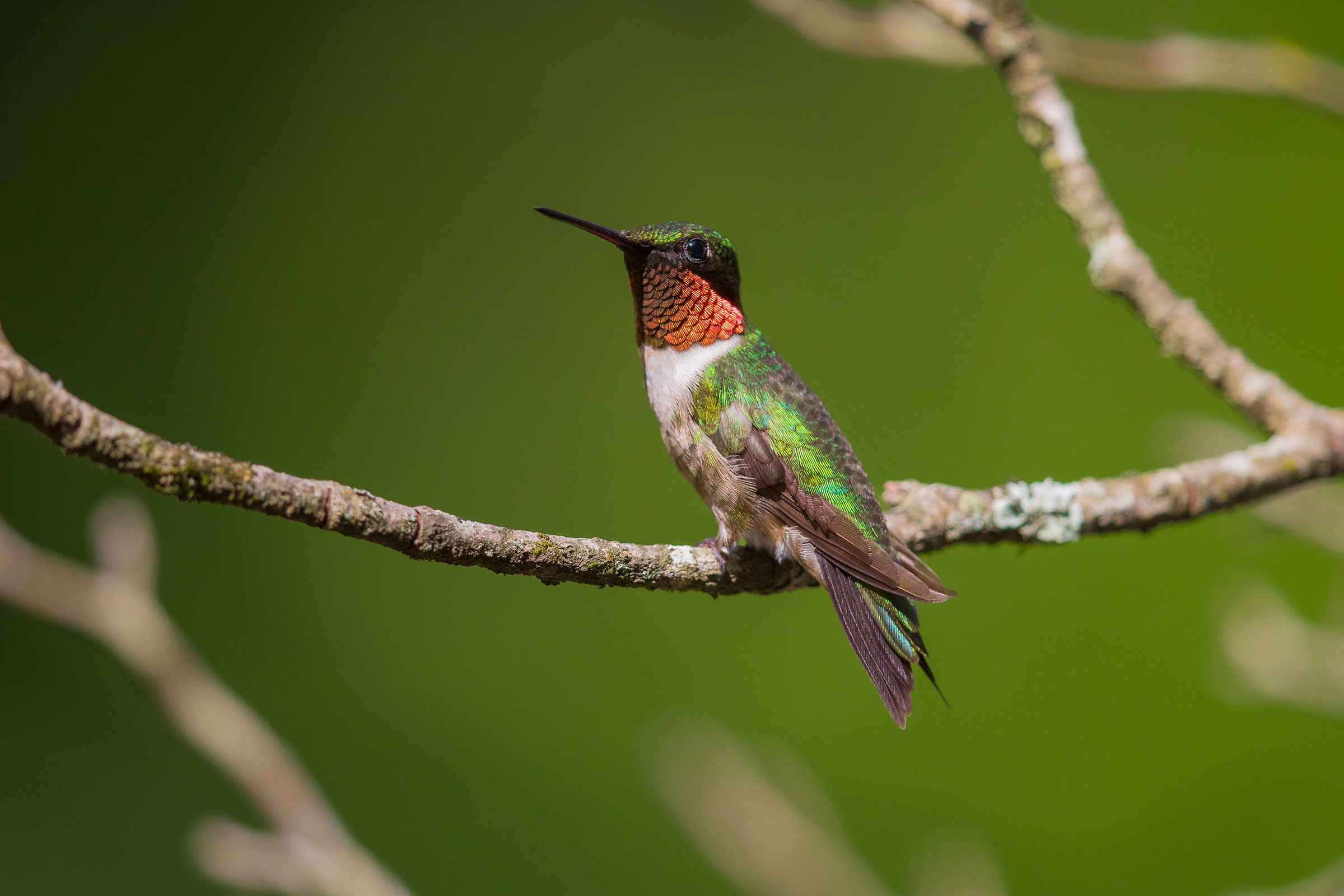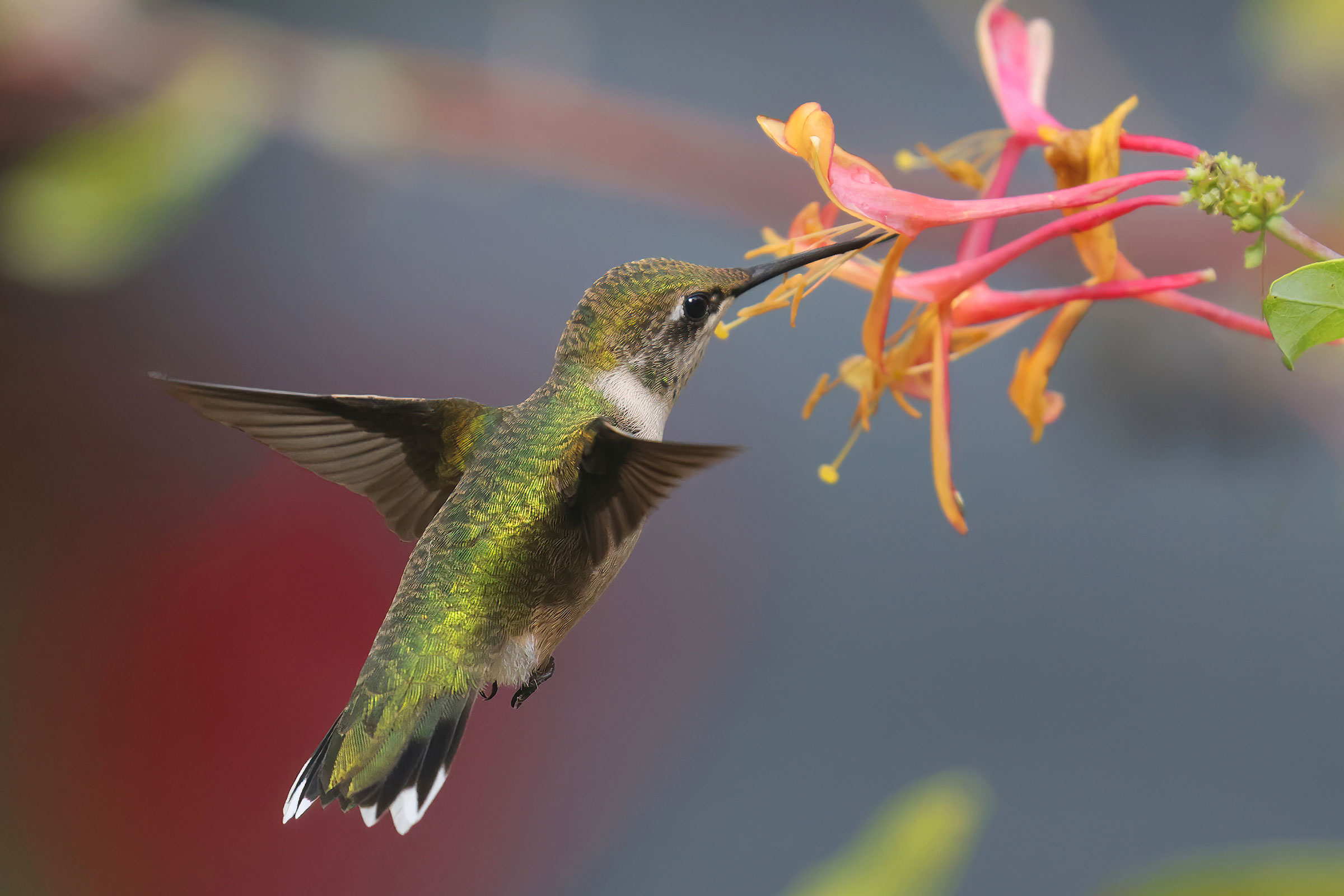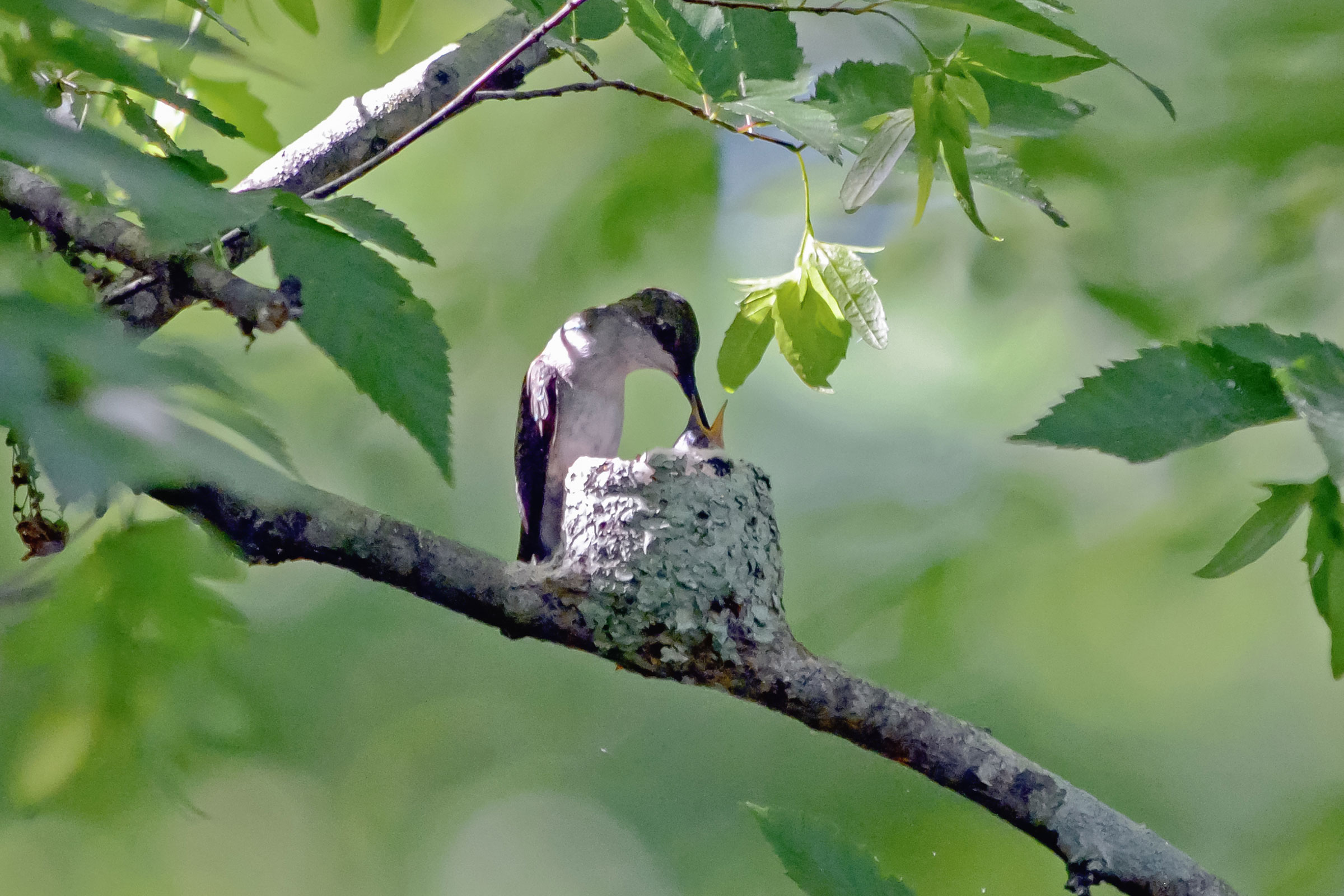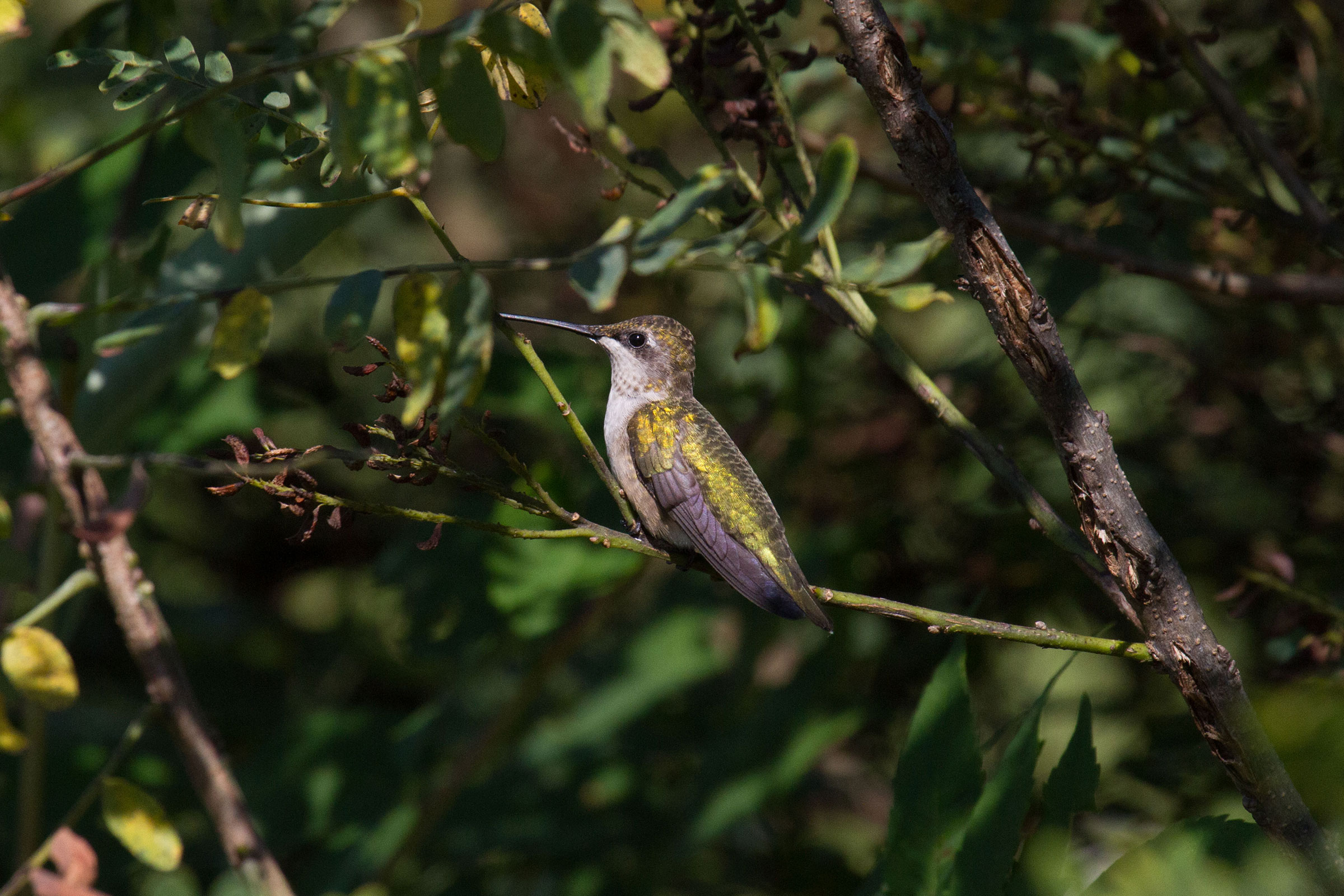Introduction
For many Virginians, Ruby-throated Hummingbirds are like part of the family. Their buzzing wings and iridescent colors greet us at the front porch feeder for morning coffee and again near the flower garden during weekend cookouts. The Ruby-throated Hummingbird’s territorial divebombing and pendulum displays keep us entertained for hours, like our own private nature channel. There is anticipation about their return in spring and sadness when they depart in fall.
Breeding Distribution
Ruby-throated Hummingbirds are found throughout all regions of Virginia. Only the most urbanized areas, such as Fairfax County and Norfolk, have somewhat lower occurrence levels (Figure 1). This species is more likely to be found in blocks with a greater amount of forest cover and forest edge habitat and a greater number of habitat types and less likely to be found in blocks that have greater amounts of developed and agricultural lands. However, none of these are strong relationships because hummingbirds have high occupancy across most of the state.
Distribution during the First Atlas and change between Atlases could not be modeled due to model limitations (see Interpreting Species Accounts). For information on its distribution during the First Atlas, please see the Breeding Evidence section.
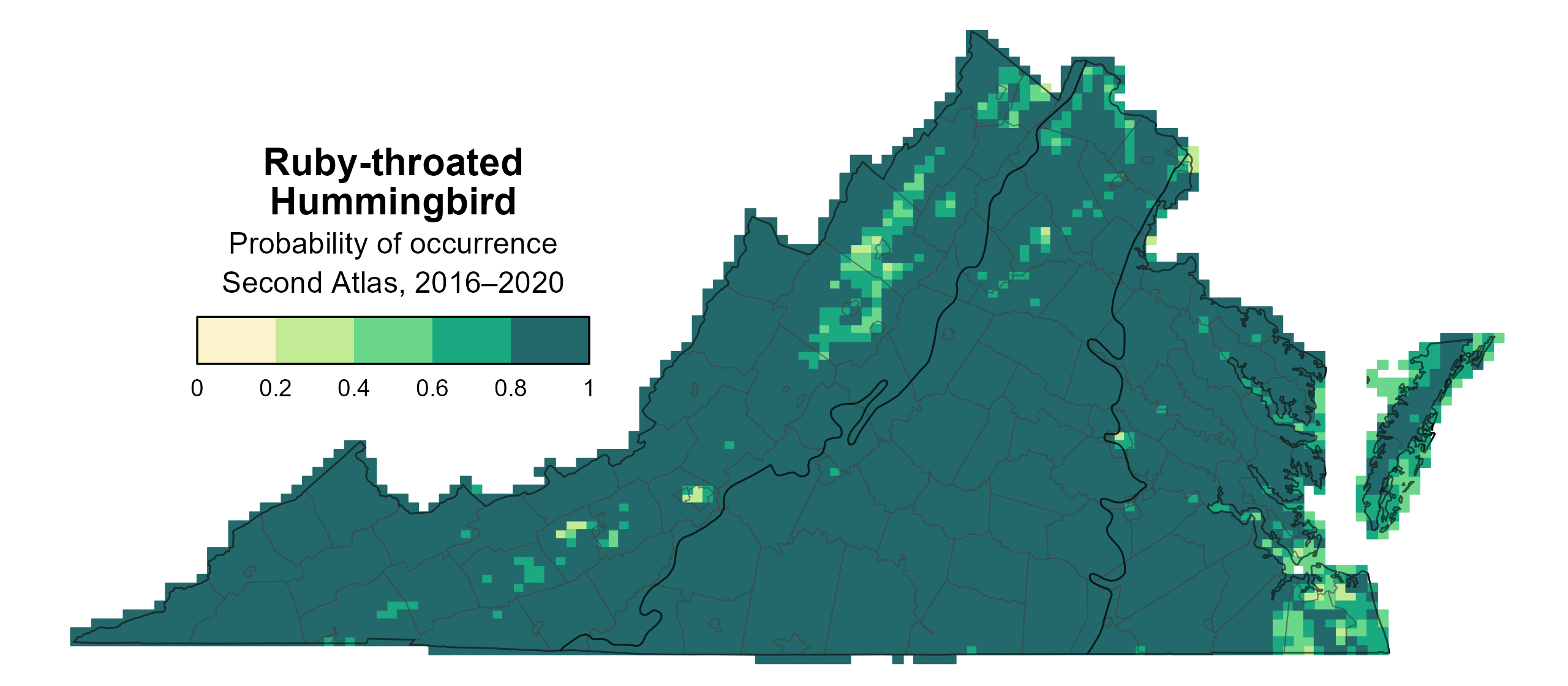
Figure 1: Ruby-throated Hummingbird breeding distribution based on probability of occurrence (Second Atlas, 2016–2020). This map indicates the probability that this species will occur in an Atlas block (an approximately 10 mi2 [26 km2] survey unit) based on environmental (including habitat) factors and after adjusting for the probability of detection (variation in survey effort among blocks).
Breeding Evidence
Throughout the state, Ruby-throated Hummingbirds were confirmed breeders in 185 blocks and 79 counties and found to be probable breeders in an additional 32 counties during the Second Atlas (Figure 2). Breeding confirmations were recorded in all regions of the state during the First Atlas as well (Figure 3). Although a greater number of breeding observations were recorded during the Second Atlas than during the First, this was likely due to the increase in survey effort given that their population trend in the Atlantic Flyway region appears stable to slightly increasing (see Population Status).
Confirmed breeding was mostly documented through observations of recently fledged young (May 27 – August 28); however, other behaviors were also frequently recorded, including adults carrying nesting material (April 21 – July 12) and occupied nests (May 4 – August 21) (Figure 4).
For more general information on the breeding habits of this species, please refer to All About Birds.
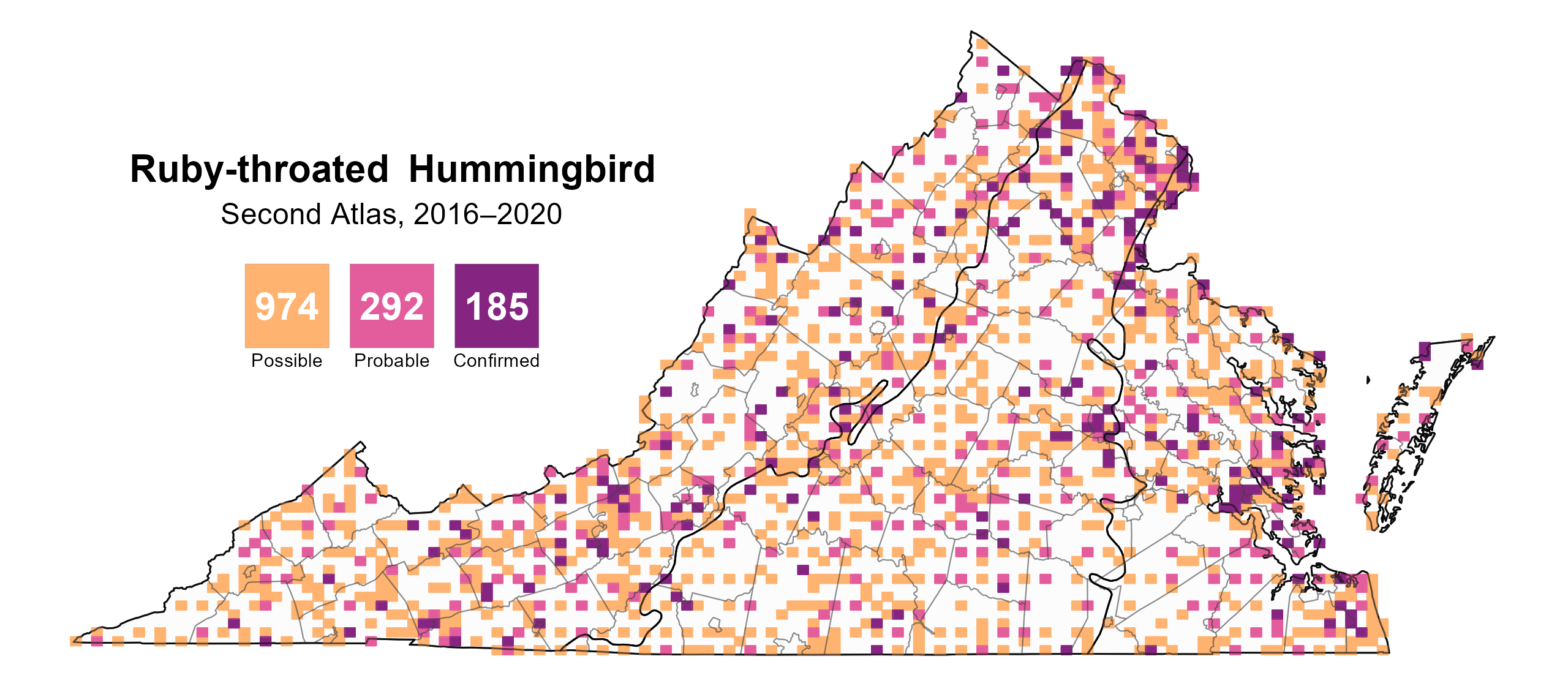
Figure 2: Ruby-throated Hummingbird breeding observations from the Second Atlas (2016–2020). The colored boxes illustrate Atlas blocks (approximately 10 mi2 [26 km2] survey units) where the species was detected. The colors show the highest breeding category recorded in a block. The numbers within the colors in the legend correspond to the number of blocks with that breeding evidence category.

Figure 3: Ruby-throated Hummingbird breeding observations from the First Atlas (1985–1989). The colored boxes illustrate Atlas blocks (approximately 10 mi2 [26 km2] survey units) where the species was detected. The colors show the highest breeding category recorded in a block. The numbers within the colors in the legend correspond to the number of blocks with that breeding evidence category.
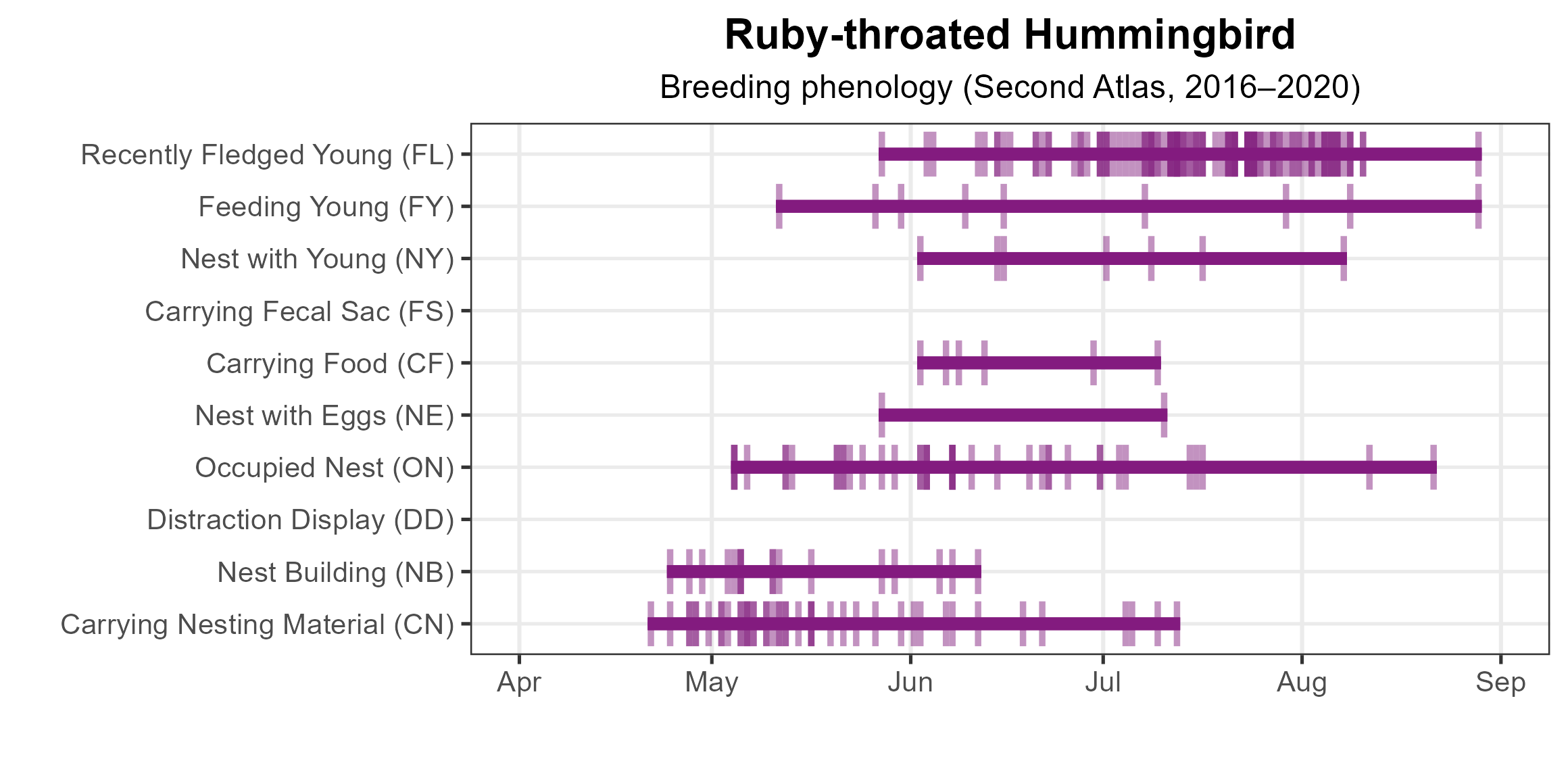
Figure 4: Ruby-throated Hummingbird phenology: confirmed breeding codes. This graph shows a timeline of confirmed breeding behaviors. Tick marks represent individual observations of the behavior.
Population Status
Ruby-throated Hummingbird relative abundance was estimated to be generally high throughout the state, except for the most urbanized and intensively farmed areas (Figure 5).
The total estimated Ruby-throated Hummingbird population in the state is approximately 1,063,000 individuals (with a range between 181,000 and 6,242,000). Based on the North American Breeding Bird Survey (BBS) data for the Atlantic Flyway region (the BBS does not produce a credible trend for Virginia), the Ruby-throated Hummingbird population grew by a significant 0.69% annually from 1966–2022 in the region, and between Atlas periods, it showed a nonsignificant increase of 0.26% (Hostetler et al. 2023; Figure 6).
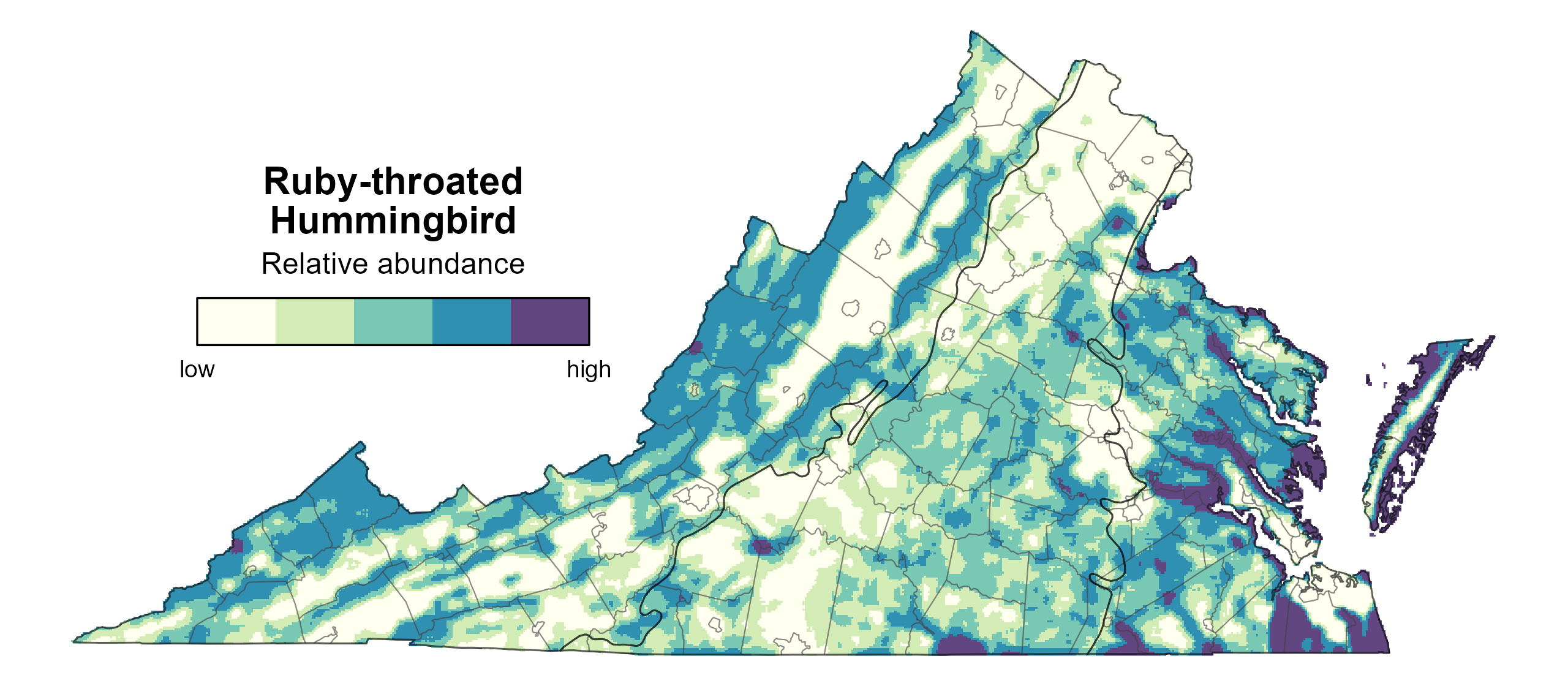
Figure 5: Ruby-throated Hummingbird relative abundance (Second Atlas, 2016–2020). This map indicates the predicted abundance of this species at a 0.4 mi2 (1 km2) scale based on environmental (including habitat) factors. Abundance values are presented on a relative scale of low to high.
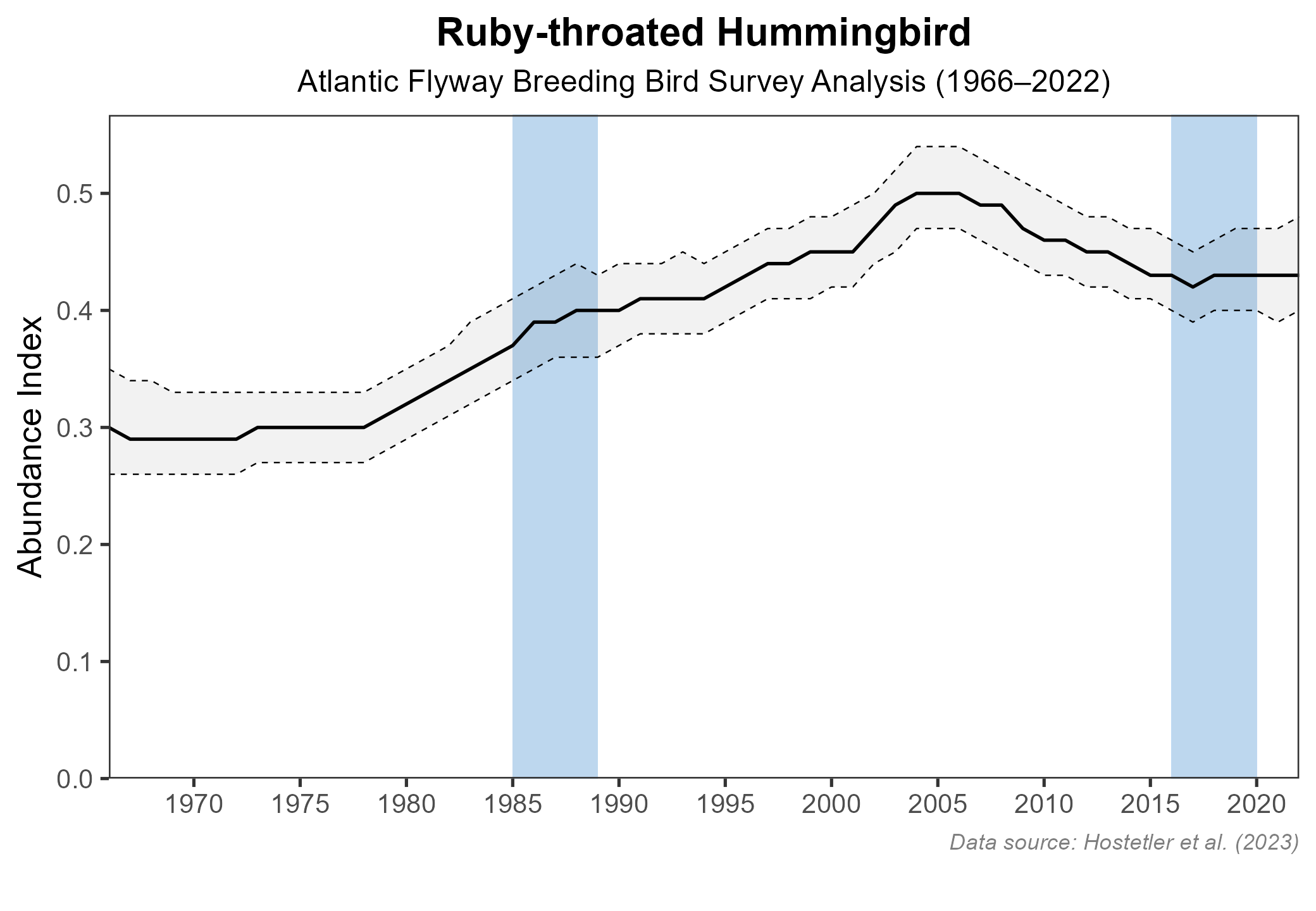
Figure 6: Ruby-throated Hummingbird population trend for the Atlantic Flyway as estimated by the North American Breeding Bird Survey. The vertical axis shows species abundance; the horizontal axis shows the year. The solid line indicates the estimated population trend; there is a 97.5% probability that the true population trend falls between the dashed lines. The shaded bars indicate the First and Second Atlas periods.
Conservation
The Ruby-throated Hummingbird’s population has remained relatively stable, possibly increasing, in the Atlantic Flyway region over the past few decades, and it is not considered to be a species of conservation concern. There are no species-specific conservation efforts underway in Virginia. However, installing nectar feeders and developing backyard habitat by planting native flowering plants, such as trumpet vine (Campsis radicans), are great ways to attract Ruby-throated Hummingbirds to your yard (Weidensaul et al. 2020).
Interactive Map
The interactive map contains up to six Atlas layers (probability of occurrence for the First and Second Atlases, change in probability of occurrence between Atlases, breeding evidence for the First and Second Atlases, and abundance for the Second Atlas) that can be viewed one at a time. To view an Atlas map layer, mouse over the layer box in the upper left. County lines and physiographic regional boundaries (Mountains and Valleys, Piedmont, and Coastal Plain) can be turned on and off by checking or unchecking the box below the layer box. Within the map window, users can hover on a block to see its value for each layer and pan and zoom to see roads, towns, and other features of interest that are visible beneath a selected layer.
View Interactive Map in Full Screen
References
Hostetler, J. A., J. R. Sauer, J. E. Hines, D. Ziolkowski, and M. Lutmerding (2023). The North American breeding bird survey, analysis results 1966–2022. U.S. Geological Survey, Laurel, MD, USA. https://doi.org/10.5066/P9SC7T11.
Weidensaul, S., T. R. Robinson, R. R. Sargent, M. B. Sargent, and T. J. Zenzal (2020). Ruby-throated Hummingbird (Archilochus colubris), version 1.0. In Birds of the World (P. G. Rodewald, Editor). Cornell Lab of Ornithology, Ithaca, NY, USA. https://doi.org/10.2173/bow.rthhum.01.

